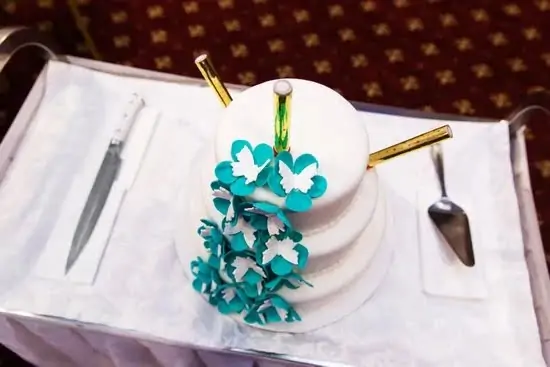Have you ever wondered how to decorate a cake professionally? Whether you’re an aspiring pastry chef or simply a baking enthusiast looking to take your skills to the next level, mastering the art of professional cake decorating is a rewarding and creative endeavor. From choosing the right tools and equipment to perfecting different decorating techniques, there are many elements that go into creating beautifully decorated cakes that stand out from the rest.
Professional cake decorating goes beyond simply frosting a cake – it’s about creating edible works of art that are not only visually stunning but also delicious. In this article, we will explore the essential tools and equipment needed for professional cake decorating, as well as tips for choosing the right cake base and frosting. We will also delve into mastering different decorating techniques such as piping, fondant, and gum paste, along with tips for achieving perfect cake borders and edges.
Whether you’re interested in working with colors, creating intricate designs, or adding personal touches to your cakes, this article will provide valuable insights on how to elevate your cake decorating skills. Additionally, we will discuss troubleshooting common decorating challenges and offer tips on how to take your cake decorating abilities to the next level. Get ready to unleash your creativity and learn the art of professional cake decorating.
Essential Tools and Equipment for Professional Cake Decorating
When it comes to decorating a cake professionally, having the right tools and equipment is essential for achieving professional-looking results. Here are some of the essential tools and equipment you will need to decorate a cake like a pro.
Pastry Bags and Tips
One of the most important tools for professional cake decorating is a set of pastry bags and tips. Pastry bags come in various sizes and materials, such as disposable plastic or reusable fabric. Pastry tips also come in different shapes and sizes, allowing you to create different designs and patterns with your frosting.
Offset Spatula
An offset spatula is another essential tool for smoothing frosting and creating clean edges on your cake. This tool allows you to spread frosting evenly and smoothly across the surface of the cake, helping to achieve a professional finish.
Bench Scraper
A bench scraper is a versatile tool that helps in achieving smooth sides and sharp edges on your cakes. It can also be used to divide batter evenly in cake pans and clean up any excess frosting on the sides of the cake.
Turntable
A turntable is a rotating platform that allows you to easily access all sides of the cake while decorating. This tool makes it easier to apply even pressure when smoothing out frosting or piping designs onto the cake.
These are just a few examples of the essential tools and equipment needed for professional cake decorating. By investing in high-quality tools and mastering their use, you can take your cake decorating skills to the next level and create stunning works of edible art.
Choosing the Right Cake Base and Frosting
When selecting a cake base, consider the flavor and texture that will best complement your design. For example, a dense chocolate cake may be ideal for a rich, decadent design, while a light chiffon cake could suit a more delicate and airy creation. It’s also important to take into account any dietary restrictions or preferences that your clients may have when choosing a cake base.
In addition to the type of cake, the choice of frosting is equally important. Buttercream, ganache, fondant, and cream cheese frosting are just a few options to consider. Each type of frosting has its own unique characteristics and working properties. For example, buttercream is versatile and easy to work with, while fondant provides a smooth finish for more elaborate designs.
To further elevate your professional cake decorating skills, it’s essential to learn how to pair different types of cakes with complementary frostings in order to achieve balanced flavors and textures in your finished products.
Finally, it’s important to consider any special dietary needs or allergies that your clients may have when selecting ingredients for both the cake base and frosting.
| Choosing the Right Cake Base | Choosing the Right Frosting |
|---|---|
| Consider flavor and texture | Consider working properties |
| Take into account dietary restrictions | Pair different frostings with complementary cakes |
Mastering Different Decorating Techniques
When it comes to professional cake decorating, mastering different techniques is essential for creating stunning and visually appealing designs. Whether you are a beginner or have some experience in cake decorating, learning how to use piping, fondant, and gum paste can take your skills to the next level.
Piping is a versatile technique that allows you to create intricate designs and patterns on your cakes. To get started with piping, you will need a few essential tools such as pastry bags, piping tips, and couplers. By practicing different piping techniques such as stars, rosettes, and borders, you can add beautiful details to your cakes.
Fondant is another popular choice for professional cake decorators. It is a type of icing that can be rolled out and draped over the cake for a smooth and flawless finish. Using fondant opens up endless possibilities for creating unique shapes, textures, and designs on your cakes. To work with fondant effectively, make sure to have the necessary tools such as rolling pins, smoothing tools, and cutters.
Additionally, mastering the art of using gum paste can add dimension and elegance to your cake designs. Gum paste can be molded into beautiful flowers, figures, and intricate decorations that will elevate the overall look of your cakes. Learning how to work with gum paste requires patience and practice but the results are truly worth it.
By mastering these different decorating techniques – piping, fondant, and gum paste – you can unleash your creativity and bring your cake decorating skills to the next level. With dedication and practice comes expertise in using these techniques effectively to create visually stunning cakes that will leave a lasting impression on everyone who sees them.
Tips for Achieving Perfect Cake Borders and Edges
When it comes to professional cake decorating, achieving perfect borders and edges is essential for a polished and professional look. Whether you are using buttercream, fondant, or ganache, there are several techniques that can help you achieve flawless borders and edges on your cakes.
One of the key factors in achieving perfect cake borders and edges is using the right tools. A good quality offset spatula and a bench scraper are indispensable for creating smooth and sharp edges on your cakes. Additionally, investing in a turntable can make it much easier to work on the sides of the cake while achieving even borders.
Another important tip for achieving perfect cake borders and edges is to ensure that your cake layers are level and well-supported. Use a serrated knife or a cake leveler to trim any uneven tops before stacking your layers. This will help create a stable base for decorating and ensure that your final result has clean, straight edges.
Finally, practicing different smoothing techniques with your chosen frosting or fondant will also help you achieve perfect cake borders and edges. Whether you prefer the Viva paper towel method (smoothing with a paper towel) or the hot water method (using a hot spatula), experimenting with different techniques will allow you to find the method that works best for you.
By following these tips and techniques, you can elevate your cake decorating skills to a professional level by achieving flawless borders and edges on all of your creations.
| Tips & Techniques | Description |
|---|---|
| Use quality tools | Invest in an offset spatula, bench scraper, and turntable for smoother results. |
| Level and support layers | Trim uneven cake tops before stacking layers to ensure stability. |
| Practice smoothing techniques | Experiment with different methods like Viva paper towel or hot water smoothing. |
Working With Colors and Creating Stunning Cake Designs
Selecting the Right Color Palette
When it comes to choosing the color palette for your cake, consider the theme or occasion, as well as any specific requests from your client. Whether you opt for bold and vibrant colors or a more subdued and elegant palette, be sure to consider how the colors will complement each other. It’s also important to take into account any cultural or symbolic meanings associated with specific colors.
Creating Intricate Designs
Once you have selected your color palette, it’s time to think about the design elements of your cake. This could include incorporating hand-painted details, delicate piping work, or even using edible embellishments like flowers or pearls. Creating intricate designs requires a steady hand and attention to detail, but the end result is sure to impress your clients and guests.
Experimenting With Texture and Patterns
In addition to color and design, consider experimenting with different textures and patterns on your cakes. This could involve using textured fondant, creating ombré effects with buttercream, or even incorporating geometric patterns using stencils or templates. Adding these extra elements can elevate the visual impact of your cakes and showcase your creativity and skill as a professional cake decorator.
By mastering the art of working with colors and creating stunning cake designs, you can set yourself apart as a professional in the world of cake decorating. Whether you’re designing a simple yet elegant wedding cake or a whimsical birthday creation, paying attention to these details will ensure that every cake you decorate is a work of art.
Adding Intricate Details and Personal Touches
When it comes to professional cake decorating, adding intricate details and personal touches is what sets apart a basic cake from a truly stunning masterpiece. From delicate flowers to intricate patterns, the possibilities are endless when it comes to adding those final touches to your creation. Here are some tips and techniques for adding intricate details and personal touches to your professionally decorated cakes:
- Utilize edible decorations: Edible flowers, metallic dragees, and edible glitter can add a touch of elegance to any cake design.
- Hand-painted designs: Using food-safe paint and brushes, you can create unique hand-painted designs on your cakes, such as watercolor effects or intricate patterns.
- Sculpted elements: Sculpting fondant or gum paste into intricate shapes, figures, or objects can add a personalized touch to your cake. Whether it’s a favorite animal or a meaningful symbol, sculpted elements can make your cake truly special.
In addition to these techniques, adding personal touches can also involve incorporating elements that hold special meaning for the recipient of the cake. For example, if the cake is for a wedding, incorporating the couple’s initials or wedding theme into the design can add a personalized and meaningful touch. Similarly, for birthday cakes, including the recipient’s favorite colors, hobbies, or interests in the design can make the cake feel extra special.
Ultimately, adding intricate details and personal touches to professionally decorated cakes requires creativity, attention to detail, and skillful execution. By mastering these aspects of cake decorating, you can elevate your creations from beautiful to unforgettable works of art.
Troubleshooting Common Cake Decorating Challenges
When it comes to decorating a cake professionally, there are inevitably some challenges that may arise. However, with the right knowledge and skills, these challenges can be easily overcome. One common issue that many cake decorators face is achieving smooth and even frosting on their cakes.
To troubleshoot this challenge, it’s essential to invest in a good offset spatula and bench scraper to help you achieve that flawless finish. Additionally, ensuring that your cake is properly chilled before frosting can also make a big difference in achieving smooth edges.
Another common challenge for professional cake decorators is dealing with air bubbles in their icing or fondant. These unsightly bubbles can ruin the overall appearance of the cake. To troubleshoot this issue, gently tap the surface of the icing or fondant with a small pin or toothpick to release any trapped air. It’s also important to knead your fondant thoroughly before rolling it out to prevent air bubbles from forming.
Lastly, piping intricate designs onto a cake can pose a challenge for many decorators, especially when working with delicate details. One way to troubleshoot this challenge is to practice piping on parchment paper before moving on to the actual cake. This will allow you to perfect your technique and gain confidence before tackling the real thing.
By being aware of these common cake decorating challenges and knowing how to troubleshoot them effectively, you can elevate your skills as a professional cake decorator and create stunning works of art that are sure to impress.
Remember that practice makes perfect when it comes to mastering the art of professional cake decorating.
Conclusion
In conclusion, mastering the art of professional cake decorating requires patience, practice, and a keen eye for detail. By investing in essential tools and equipment, choosing the right cake base and frosting, and learning different decorating techniques such as piping, fondant, and gum paste, you can elevate your cake decorating skills to a professional level.
Paying attention to achieving perfect cake borders and edges, working with colors to create stunning designs, and adding intricate details and personal touches will further enhance your creations.
To truly take your cake decorating skills to the next level, it’s important to troubleshoot common challenges that may arise during the decorating process. Whether it’s dealing with cracked fondant or uneven frosting, knowing how to address these issues will set you apart as a professional decorator. Additionally, seeking inspiration from other professional decorators and experimenting with new designs and techniques will help you continue to grow and improve in your craft.
Frequently Asked Questions
What Do Professionals Use to Decorate Cakes?
Professionals use a variety of tools and techniques to decorate cakes, including piping bags, fondant, edible decorations, and edible paints. These tools allow them to create intricate designs and beautiful decorations on cakes.
How to Decorate a Birthday Cake Professionally?
Decorating a birthday cake professionally involves using proper techniques for frosting the cake, adding decorative elements such as flowers or figures made from fondant or gum paste, and paying attention to detail when it comes to piping designs or writing messages on the cake.
How Do You Make a Cake More Professional?
Making a cake more professional involves focusing on the details such as ensuring even layers, straight edges, and smooth frosting. It also includes using quality ingredients, experimenting with different flavors and fillings, and incorporating advanced decorating techniques like sugar art or chocolate work.

Welcome to our cake decorating blog! My name is Destiny Flores, and I am the proud owner of a cake decorating business named Cake Karma. Our mission is to provide delicious, beautiful cakes for all occasions. We specialize in creating custom cakes that are tailored specifically to each customer’s individual needs and tastes.





